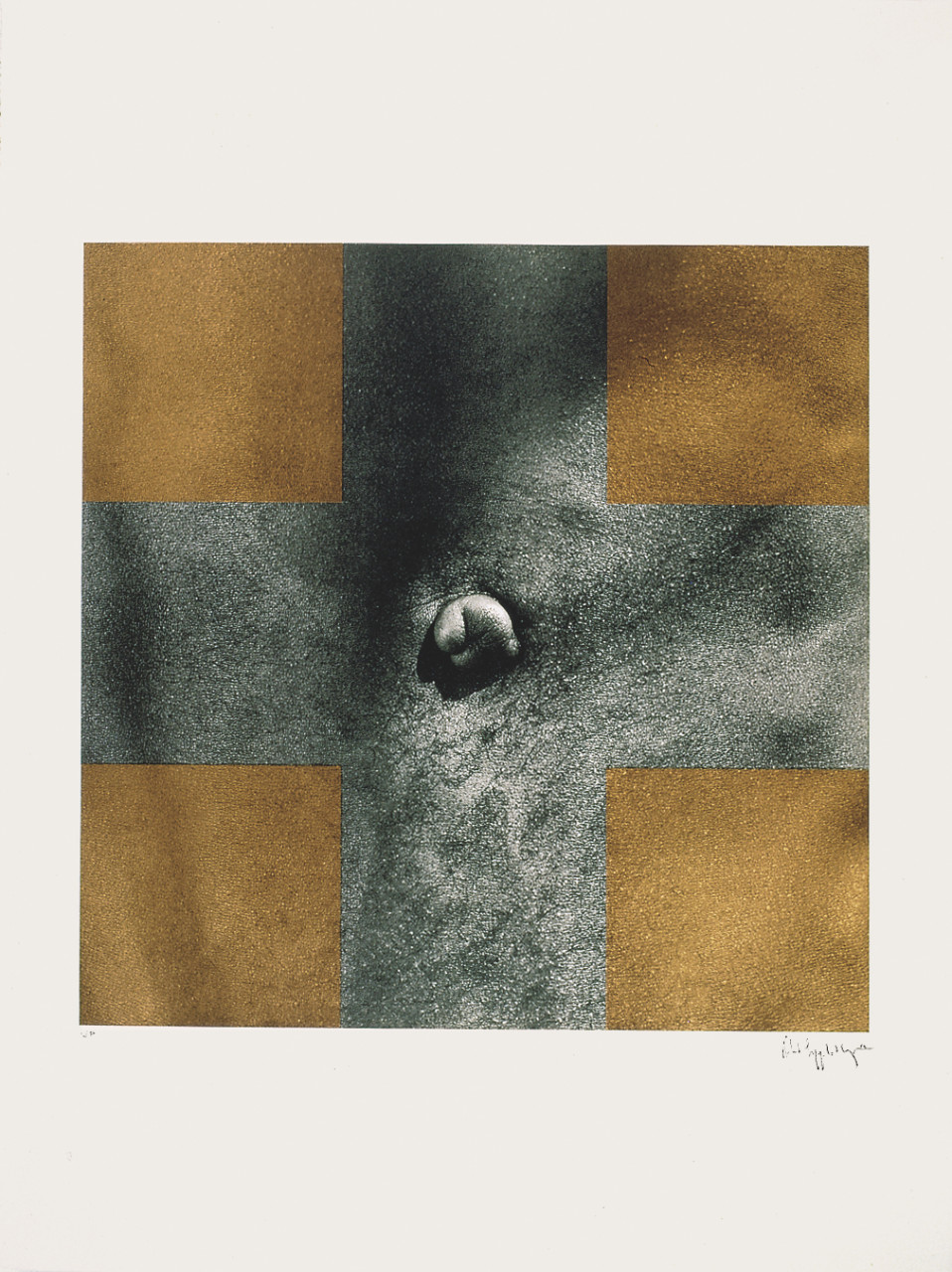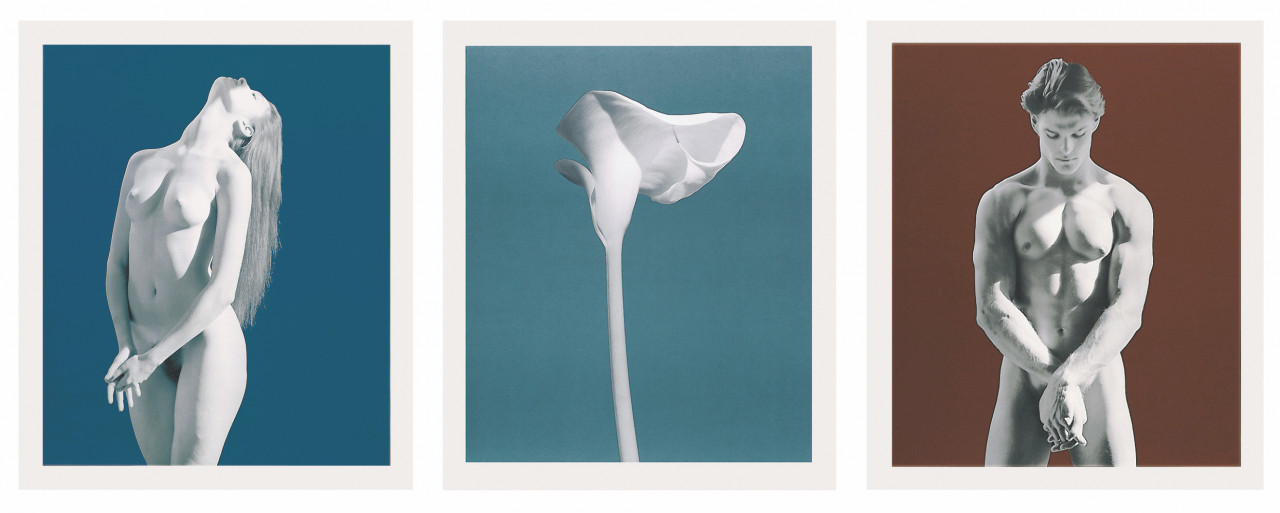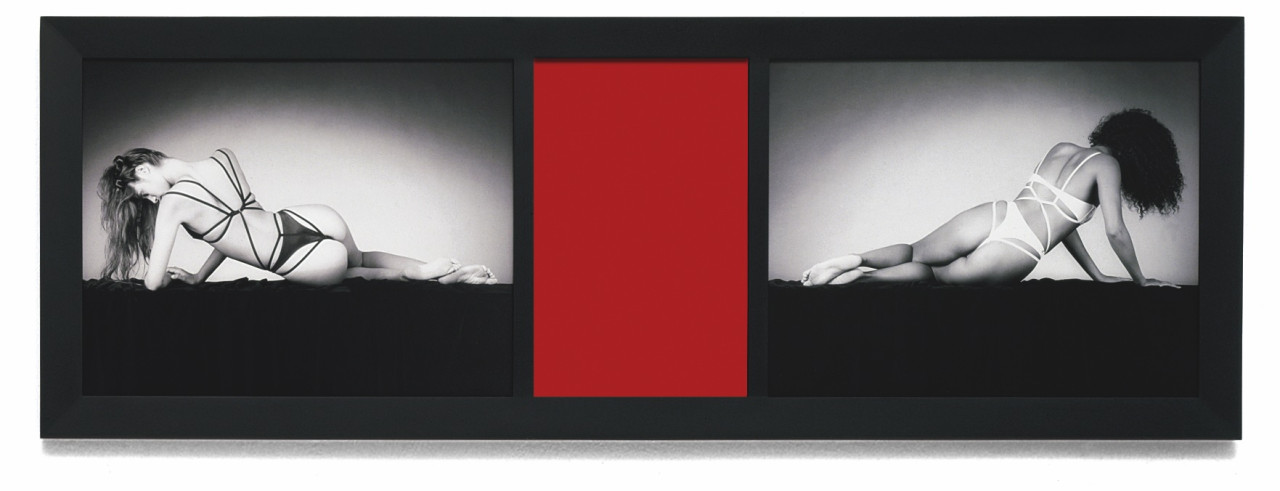Robert Mapplethorpe
Robert Mapplethorpe (1946-1989), born in Floral Park, New York, lived and worked in New York City. Mapplethorpe is considered one of the most important photographers of the 20th century. After studying at the Pratt Institute in New York, he began experimenting with Polaroid photography in the 1970s before moving on to highly stylized portraits, nudes, still lifes, and floral subjects using a Hasselblad camera. His technically refined and often provocative images fuse classical composition with transgressive content, engaging deeply with themes of the body, identity, and desire. Central to Mapplethorpe’s practice is his reverence for classical sculpture, which informs his formal, meticulously composed depictions of the human form. He applied this sculptural sensibility across all his subjects – whether erotic nudes, self-portraits, or flowers – pursuing what he described as a “perfection of form”. This consistent aesthetic vision allowed him to merge beauty with controversy, tradition with defiance, creating a body of work that remains both visually arresting and conceptually groundbreaking.
Robert Mapplethorpe Editions
America
1988
Set of 3 lithographs on rag paper, each print 75.5 x 63.5 cm (29½ x 25 in), stamp-signed and authenticated by the estate on verso. Edition of 40.
Robert Mapplethorpe's edition America is a three-part photographic work that captivates through formal rigor and symbolic density. Woman, flower, and man appear in extreme overexposure, rendering the bodies almost sculptural and marble-like – a reference to classical ideals. The nudity of the figures is both emphasized and restrained by their covering hands, lending the depiction a controlled and stylized quality. The flower serves as a central symbol, mediating between the genders – an emblem of hidden sexuality and its sublimation. America explores concepts of the body, gender, and ideality, while also offering a critical reflection on an exalted image of national identity.
Mirror Image
1988
Two laminated gelatin silver prints and mirrored Plexiglas in five color variations (blue, red, smoke, violet, green) in a black wooden frame, 48.3 x 134.6 x 2.5 cm. Edition: 18, signed and numbered on label on verso of piece.
With Mirror Image, Robert Mapplethorpe created a striking three-dimensional edition, composed of two laminated gelatin silver prints and a central panel of colored Plexiglas, all set within a black wooden frame. The diptych presents two women in nearly symmetrical, reclining poses, dressed in strappy lingerie that accentuates the sculptural quality of their bodies. The mirrored Plexiglas at the center acts as both a visual and conceptual axis – suggesting reflection, duality, and inversion. With its formal precision and exploration of beauty, sexuality, and identity, Mirror Image exemplifies Mapplethorpe’s distinctive approach to the body as an object of aesthetic and symbolic contemplation.

Cross
1986
From For Joseph Beuys
Lithograph on rag paper, 81.3 x 61 cm (32 x 24 in). Edition of 90 + XXX, signed and numbered.
At the center of the edition Cross, Robert Mapplethorpe’s contribution to the group portfolio honoring the late Joseph Beuys, is a close-up photograph of a human torso, with the navel – a point of origin and connection – positioned precisely at the intersection of a bold, gold cross. As the literal and symbolic center of the body, the navel becomes the focal point of the composition, which reflects the formal precision and symmetry characteristic of Mapplethorpe’s meticulous aesthetic. The cross itself serves as a poignant reference both to Beuys’ passing and to the latter's own frequent use of the cross motif throughout his oeuvre, where it functioned as a charged emblem of myth, healing, transformation, and spiritual inquiry.




